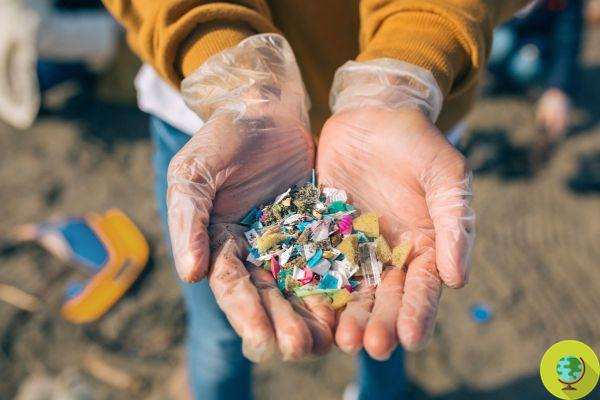
The damage includes cell death and occurs as a result of ingesting the microplastics in food
For the first time, a new study quantifies the levels of microplastics that cause collateral damage, which includes cell death and occurs as a result of ingestion through food.
According to a new study, the microplastics we ingest through food cause damage to the cells of our bodyThese damages include cell death and various types of allergic reactions. What is still not clear to scholars is how long the particles remain in the body before being expelled and, consequently, what is the extent of the damage they can cause.
Microplastic pollution has now contaminated the whole planet: There is no corner of the globe that is not invaded by these tiny particles of plastic material - from the depths of the oceans to the ice of the Arctic. They invaded the food chain, ending up in the stomachs of fish and other animals before ours, so we already know that our diets, unfortunately, are rich in them. But until now the toxicological effects of microplastics on the cells of the human organism had not been thoroughly analyzed. This work, in fact, is the first to quantify the thresholds of the effects of microplastics on human cells and, in particular, the influence that these particles have on the release of cytokines - protein molecules that stimulate specific cell activities such as growth, differentiation and death.
(Read also: Microplastics everywhere: the appeal of the Umberto Veronesi Foundation to get out of Plasticene)
Scientists compared the levels of microplastics with which these particles are capable of causing harm with the levels assumed by people through contaminated fish, drinking water and salt. The observation showed that specific types of cell damage - cell death, allergic responses, damage to cell walls - were caused by the levels of microplastics present in the food and ingested through it. The damaging effects on cells caused by microplastic particles are in many cases the first step towards more serious health problems, and there is currently no way to protect ourselves from this "invasion".
Research on the negative effects of microplastics on human health is progressing fast, as our daily exposure to these particles grows at very rapid levels: we eat, drink and inhale microplastics practically every day, without even realizing it - and we still don't know how. this may affect our health.
Last year, a study had shown the presence of microplastics already in the placenta of unborn children - a phenomenon about which the researchers had expressed great concern, while with another research the scientists had attested the presence of these particles even in bottled milk intended for consumption by infants, who would therefore also ingest them millions a day.
Subsequent studies could make available a strategy to identify the most contaminated foods, in order to avoid them - even if the most effective solution remains that of abolish the consumption of plastic: in fact, once this material is thrown into the environment, it is practically impossible to get rid of it.
Follow your Telegram | Instagram | Facebook | TikTok | Youtube
Fonti: The Guardian / Journal of Hazardous Materials
We also recommend:
- Our children's feces are full of microplastics, 10 times more than adults
- Plastic fish: Microplastics are found in 83% of Bangladeshi fish
- The growth of courgettes is threatened by the presence of microplastics. I study


























